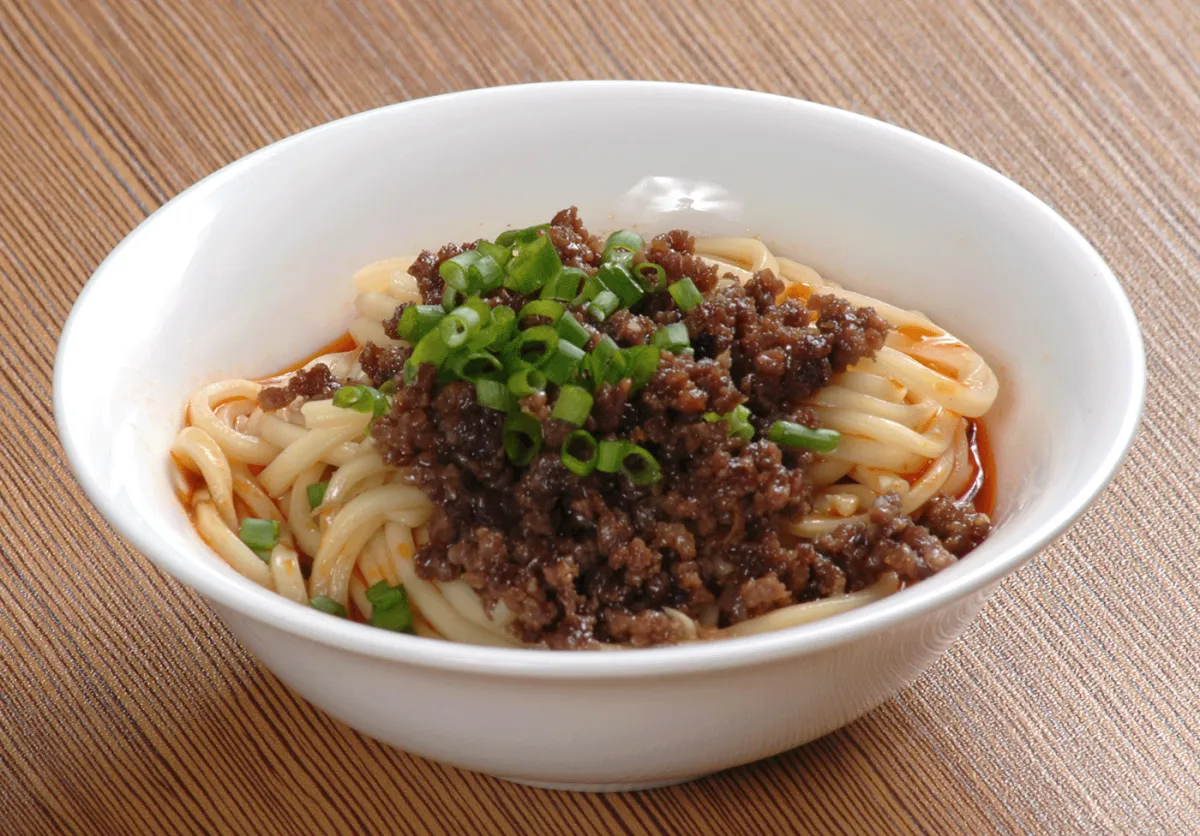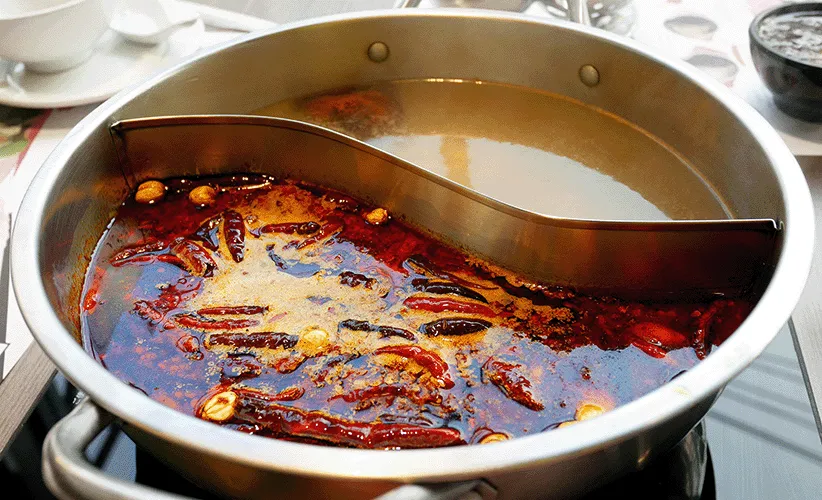
Food Blog Recipes
Chinese__________Japanese__________Korean__________Thai__________Vietnamese__________All
Minnesota-AAPI Database
Events and Festivals________Food and Dining________Arts and Entertainment________Religious and Spiritual Centers
Health and Wellness________Martial Arts and Sports________Business and Professional________Educational Resources________Civic Organizations
Chinese Recipes
Exploring its 19 Unique Culinary Traditions
Sichuan Recipes:
The Bold and Spicy Heart of Chinese Cuisine

Doenjang Jjigae and the United Noodles Experience
Introduction!
Picture this: a rainy day, your favorite K-drama queued up, and a simmering pot of Doenjang Jjigae gently bubbling on the stove. If that's not a scene straight out of a Korean drama, then I don't know what is. Let’s dive into why this soybean stew is basically the lead actor in the drama of Korean cuisine.

Cast of Characters
A good K-drama needs a solid ensemble cast, and Doenjang Jjigae brings it. You’ve got your tofu, playing the soft-hearted, tender love interest who complements the robust doenjang paste. Throw in some zucchini and potatoes, the reliable sidekicks providing comic relief and depth. And don’t forget the occasional cameo appearance by mushrooms or seafood, adding that touch of drama to spice things up.
The Scene-Stealer: Doenjang Paste
First things first, let's talk about the star of this show—doenjang paste. This fermented soybean paste isn't just a flavor; it's a whole mood. It’s the Gong Yoo of ingredients: deeply soulful, incredibly versatile, and seasoned to perfection from years of fermenting. When doenjang hits the hot broth, it’s like the plot twist you never saw coming but suddenly can’t live without.
Plot Thickens with Preparation
Preparing Doenjang Jjigae is like scripting a classic K-drama. There’s comfort in the familiar base—a boiling broth enriched with anchovies and kelp that sets the stage for the unfolding drama. Then, the doenjang paste enters the scene, stirring up emotions and merging with the broth in a dance as synchronized as any K-pop choreography.
Rising Action
As the stew simmers, each ingredient slowly reveals its character. The vegetables soften, sharing their distinct flavors, much like the second lead who ends up capturing your heart with their steadfastness. Meanwhile, the tofu absorbs every bit of the drama, becoming a pivotal part of the storyline that holds the plot together.
Climactic Flavor
Just when you think you’ve figured it all out, a dash of chili pepper and garlic is added, bringing that quintessential K-drama conflict and fiery passion to the bowl. It's the climactic scene where secrets are revealed, tears are shed, and flavors intensify.
The Resolution
Every K-drama has its resolution, and in Doenjang Jjigae, it’s when you lift that first spoonful to your lips. The complex, hearty flavors envelop you like the satisfying conclusion of a long-running drama. It’s warm, it’s comforting, and it leaves you with that feel-good resolution as all the characters come together in perfect harmony.
Epilogue: Serve and Enjoy
As you settle in to watch your K-drama, with a bowl of Doenjang Jjigae in hand, you realize that this isn't just food; it's part of the story. Each bite is a comforting hug from your favorite character, reassuring you that no matter how dramatic life gets, there’s always a bowl of Doenjang Jjigae to come home to.
So, here's to Doenjang Jjigae, the unsung hero of comfort food and the unofficial sponsor of rainy days and K-drama marathons. Because just like in your favorite series, no matter how many new dishes you try, you’ll always return to this classic—episode after episode, season after season
Doenjang Jjigae Recipe
with United Noodles’ Recommended Brands
Embark on a savory journey with Eric Fung to craft Doenjang Jjigae, a hearty Korean soybean stew. At United Noodles, find authentic Doenjang and fresh ingredients for this umami-rich, comforting dish that perfectly balances deep flavors with fresh vegetables, creating a delicious, soul-warming meal.
Ingredients:
4 cups of anchovy or kelp broth
3 tablespoons of Doenjang (Korean fermented soybean paste)
1 tablespoon of Gochujang (Korean red chili paste) (optional for extra heat)
1/2 lb tofu, cut into 1-inch cubes (House Foods Green 14oz)
1 small zucchini, sliced
1 medium potato, cubed
1/2 onion, sliced
4-5 mushrooms, sliced
2 cloves garlic, minced
1 green chili, sliced (optional for extra heat)
1/2 cup kimchi, chopped (optional for added flavor)
1/2 lb of protein (optional - can be thinly sliced beef, pork, or seafood)
2 green onions, chopped
1 teaspoon sesame oil (Kadoya Pure Sesame Oil, 11 Fl Oz)
Instructions:
Prepare the Broth: In a large pot, bring the anchovy or kelp broth to a boil. If using anchovies, remove them after boiling for 15 minutes.
Add Doenjang: Lower the heat to medium, and dissolve the Doenjang in the broth. For a spicier stew, add Gochujang at this stage.
Cook Vegetables: Add the potato, onion, and garlic to the pot. Let them cook for about 5 minutes until they start to soften.
Add Protein: If you're including a protein like beef, pork, or seafood, add it now and cook until nearly done.
Add Remaining Ingredients: Add the tofu, zucchini, mushrooms, green chili, and kimchi. Simmer everything for another 10-15 minutes, allowing the flavors to meld together.
Final Touches: Once all ingredients are cooked, stir in the green onions and drizzle with sesame oil. Give it one final stir to combine everything.
Serve: Ladle the Doenjang Jjigae into bowls while hot. It's traditionally served with a bowl of steamed rice and other side dishes.
Enjoy: Savor the hearty, umami-rich flavors of your homemade Doenjang Jjigae with family or friends!
Notes:
Adjust the amount of Doenjang and Gochujang according to your taste preferences.
Feel free to add or substitute vegetables according to availability and preference.
Always taste and adjust the seasoning as needed, considering the saltiness of your Doenjang and broth.
Check out some other of our favorite recipe variants:
United Noodles Copyright © 2024 | All Rights Reserved
Copyright © 2024 | All Rights Reserved




